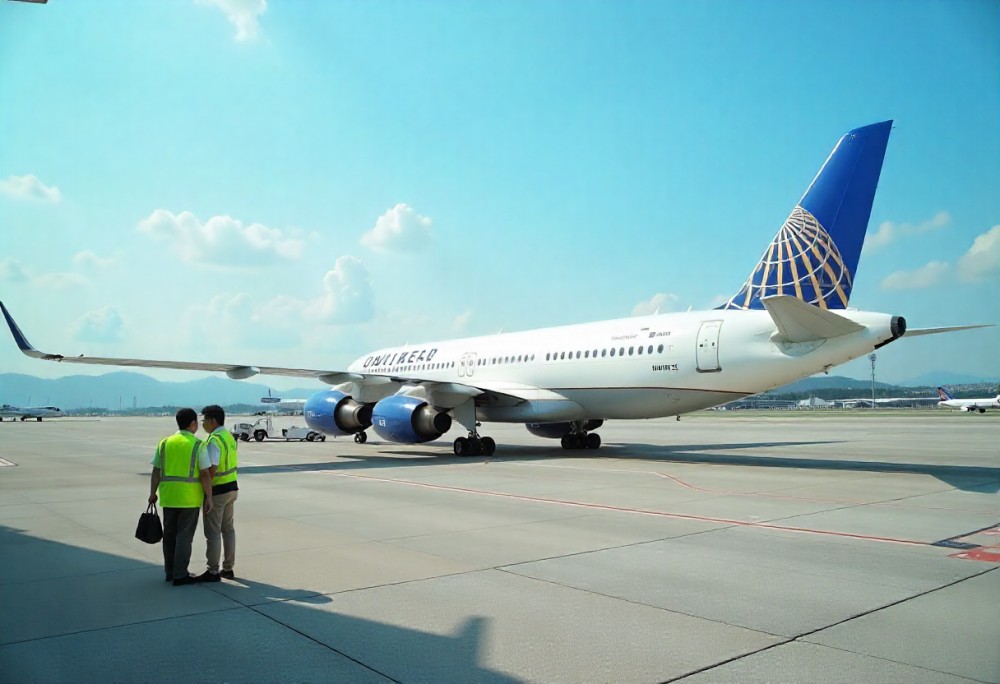Published on
September 14, 2025
Kansai International Airport in Osaka, Japan, reopened its runways completely early yesterday morning after United Airlines flight had an emergency landing due to a fire alert in the cargo hold. The incident, which happened on September 12, 2025, involved United Flight 32, Boeing 737 flying from Narita, Japan, to Cebu, Philippines. After the emergency landing, all 142 passengers and crew members evacuated the plane through emergency slides. Five people were injured non-life-threateningly, said local firefighters, but fortunately, no casualties were reported. The plane was checked, and United Airlines officials assured that no fire broke out on board.
Emergency Response and Temporary Closure of Runways
The incident led to the temporary closure of both runways at Kansai International Airport as a precautionary measure, delaying airport operations. However, the airport responded swiftly to reopen the runways, with one runway being cleared within an hour of the emergency landing and the second runway reopened by 2:30 a.m. on Saturday. The quick action allowed normal airport operations to resume, minimizing disruptions to other flights.
The incident, although serious, was managed effectively, ensuring the safety of all passengers and crew. This quick response highlights the airport’s safety protocols and the professionalism of Kansai’s emergency services.
United Airlines Confirms No Fire on Board the Aircraft
According to United Airlines, the initial inspection of the Boeing 737 revealed no indication of fire. The airline confirmed that the cargo hold fire alert was a false alarm, which was promptly handled in coordination with local aviation authorities. United Airlines also stated that they are working closely with Japanese aviation officials to further investigate the details of the alert and the cause of the emergency landing.
The airline reassured passengers that all safety protocols were followed during the emergency, and that there was no immediate danger to anyone on board. The incident underscores the importance of safety systems and how effectively they work to protect passengers when situations arise.
Prompt Evacuation and Passenger Safety
The evacuation of 142 passengers and crew members from Flight 32 was carried out quickly and efficiently, with emergency slides deployed to facilitate the safe exit of all onboard. Firefighters and emergency personnel were on-site immediately after the plane landed, ensuring the safety of everyone involved.
Although five passengers suffered minor injuries, they were treated promptly by medical teams, and there were no serious casualties. The effective evacuation process highlighted the well-preparedness of the airport and its commitment to passenger safety in emergency situations.
Cathay Pacific to Resume Flights from Kansai International Airport
Following the incident, Kansai International Airport worked swiftly to ensure minimal disruption to airport operations. United Airlines arranged for a new aircraft to carry passengers from Flight 32 to Cebu, with the replacement flight departing Saturday morning.
This swift action ensured that the majority of passengers could continue their journey with minimal delays. The airport’s ability to quickly accommodate replacement flights highlights its resilience and efficiency in managing emergency situations, ensuring passengers’ travel plans are restored promptly.
Kansai International Airport’s Ongoing Commitment to Safety
Following the emergency landing of Flight 32, Kansai International Airport reaffirms its commitment to air travel safety and emergency preparedness. The airport has long been known for its high safety standards and ability to handle emergency situations, and the swift reopening of its runways and resumption of normal operations demonstrate the effectiveness of its safety protocols.
As Japan’s primary international gateway, Kansai International Airport continues to enhance its infrastructure, technology, and safety measures to ensure that it remains one of the world’s most reliable airports. The airport’s quick response and effective management of this emergency highlight its role in global air travel and its ability to handle unforeseen situations efficiently.
The Broader Impact on Japan’s Aviation Sector
The incident at Kansai International Airport has not only tested the airport’s safety measures but also reinforced the importance of strong aviation infrastructure in handling potential emergencies. As air traffic continues to increase, the aviation sector in Japan remains a vital part of the country’s tourism and business connectivity.
With Kansai International Airport playing a central role in Japan’s international air travel network, the effective handling of emergencies like this ensures confidence in the safety of air travel for passengers traveling to and from Japan. It also emphasizes the need for continuous investments in safety protocols and training for aviation personnel, allowing airports to be well-prepared for any situation.
Safe Return to Normal Operations
United Airlines Flight emergency landing on September 12, 2025, at Kansai International Airport reminds us all of the imperative need for air safety systems and smooth airport operations. The prompt action by airport and airline personnel guaranteed that all passengers and crew members were safely evacuated, with very few injuries reported. With the mishap settled, Kansai Airport returned to normal in a short span of time, re-establishing passenger trust and minimizing travel interference. Kansai International Airport remains a hub for domestic as well as foreign flights, and how it managed to proceed with business as usual despite the scare showcases its continued dedication to security and excellence in aviation. United Airlines’ swift action also confirmed its commitment to customer safety, allowing travelers to proceed on their journey with peace of mind.
